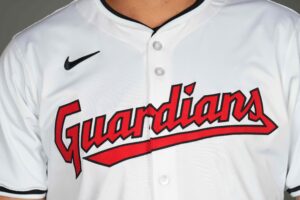2020 Player Preview: Dexter Fowler
As the St. Louis Cardinals began the 2019 season on a tear, racking up 20 wins before the calendar turned to May, the versatile, switch-hitting Dexter Fowler was a catalyst for their success. After a disappointing, injury-shortened 2018 campaign that saw Harrison Bader excel in his usual centerfield spot, Fowler was shifted over to rightfield and viewed by many as an afterthought. He was considered an average-at-best outfielder who had simply ridden the wave of his 2016 World Series win with the Chicago Cubs to an overextended, overvalued contract.
However, as the Cardinals rolled through the National League over the season’s first
month, Fowler excelled in his new offense-centric role, slashing .313/.415/.425 over that
period. All Mike Shildt really needed in a lineup with perennial All-Stars like Paul Goldschmidt and Matt Carpenter was an efficient, patient hitter who relished the opportunity to create run-scoring opportunities however possible. The 33-year-old Georgian did exactly that as the Cardinals rose to the top of the NL Central.
Dexter Fowler: 2019 Recap
The Negative
As the Cardinals hit a wall at the turn of the new month, Fowler’s hot start dissipated
quickly, one of many contributors to a 9-18 skid that saw their division lead disappear in a
heartbeat. His slash line plummeted to .171/.341/.329 striking out at a higher clip and failing to produce consistent hard contact. His BABIP (batting average on balls in play) dropped from .407 to .205. Pitchers who had attacked Fowler with heaters for much of his career caught on to his fastball-hunting approach. He even saw a 7% drop in fastballs as well as a 3% increase in breaking balls as the season progressed, per Baseball Savant.
Fowler’s plate discipline, a hallmark of his value as a hitter, suffered greatly even as other Cardinals behind him the order struggled. Fowler’s chase rate on pitches outside the strike zone rose to a career-high 23%. This trend of rising swing-and-miss rates is not unique in recent years. As pitching improves and the “launch-angle era” evolves even when he did get bat on the ball, per Statcast his average exit velocity of 85.2 MPH ranked 256th in baseball. This was a career-low for the former 14th-round pick. Even his defensive production, viewed as a plus for him coming from Chicago, dropped to a below-average level. Despite starting every day Fowler accumulated -1 DRS and an outfield jump that sat in the 10th percentile of MLB.
The Positive
Despite the many struggles Dexter Fowler faced throughout the 2019 season, including his 0-for-11, 6-strikeout NLCS against the Washington Nationals, the switch-hitting, Air Jordan-rocking leadoff man showed signs of his former self that could be very useful come 2020. Despite taking most of his late-season high-leverage at-bats from the leadoff spot, Fowler did the most damage hitting 7th, posting a .939 OPS as well as 13 extra-base hits and 23 walks.
Fully recovered from the nagging lower-body injuries that had limited him even when
healthy in 2018, Fowler played 150 games for only the second time in his 12-year career. His ability to stay healthy allowed him to rack up career highs in home runs (19) and RBI (67). Even when struggling at times to hit the ball hard, Fowler provided much-needed discipline and excelled at getting on base. His patience led to a walk rate of 12.9%, 8th among all major league outfielders according to Fangraphs. And as St. Louis began to find their way again towards the end of summer, Fowler used that patient, less-is-more approach to bait pitchers into giving him balls to hit, even hitting 4-for-6 with two home runs on 3-0 counts.
2020 Outlook
Even as Dexter Fowler’s popularity as both a player and a person within the Cardinals
the organization has grown rapidly since his arrival, many questions remain surrounding his role in 2020 and beyond. Some outside Busch Stadium describe the Cardinals’ usage of Fowler as that of the “sunk-cost fallacy.” With this logic, a company refuses to acknowledge their past investment (in this case, Fowler’s five-year, $82.5 million deal signed in 2017) as a failure and keeps trying to pull every last bit of profit from it, often at the expense of other investments, i.e. St. Louis’ core of young outfielders.
Fowler’s abysmal spring training prior to cancellation certainly did not help dissuade
these skeptics, as he struggled with only 3 hits in 31 at-bats, none of them for extra bases, and struck out 12 times to only 3 walks as superstar outfield prospect Dylan Carlson tore up Grapefruit League pitching. Spotrac ranks Fowler’s contract as the 184th-best value in baseball based on his recent production, behind the heavily scrutinized signings of the Texas Rangers‘ Rougned Odor and the San Francisco Giants‘ Evan Longoria.
To earn a starting spot in Mike Shildt’s outfield, the former Cub needs to find some of his Chicago magic. Especially with the introduction of the universal designated hitter. Fowler will have ample opportunity to prove himself as worthwhile to the Cardinals’ success. He can also prove he is not just a wasted signing by a club revered for their financial decision-making.
Sources: Baseball-Reference, Fangraphs, Baseball Savant, MLB.com, Spotrac
Main Image
Embed from Getty Images






